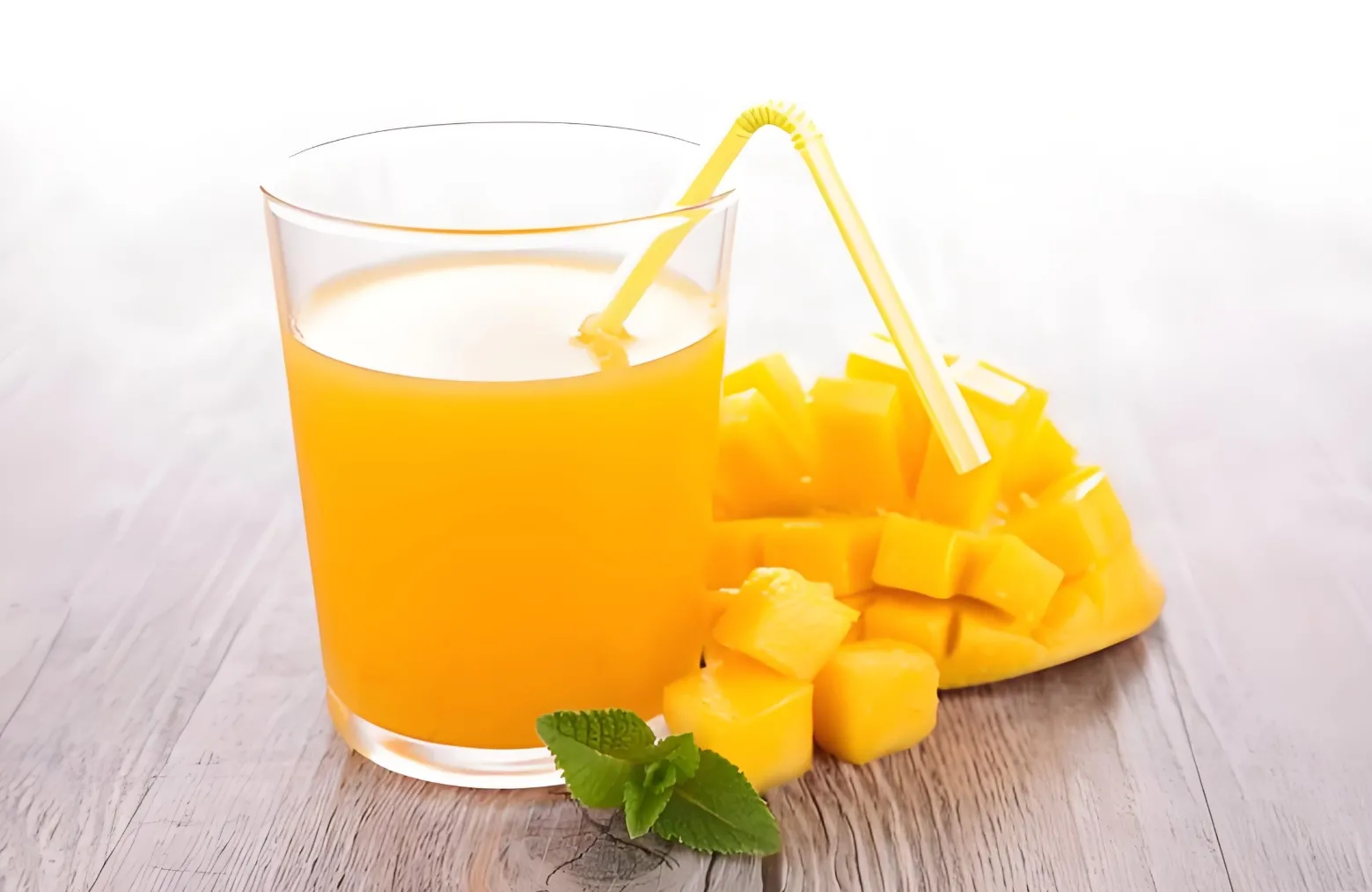The percentage of mango juice will be determined according to the content of the juice, and the pre-treatment and filling of the raw fruit and other post-packaging equipment will be configured according to the process. The general mango processing process is: cleaning, crushing, pulping, filtering, sugaring, and sterilization. PET bottles are blown, filled, labeled or sleeved, sprayed, plastic film wrapped and carton packed.
The introduction of the mango juice beverage production line and the equipment required for the production of juice beverages points out that the obtained raw pulp is added to the mixing tank for production. The mixing system is composed of multiple equipment. The taste of the juice beverage itself is much lighter after being diluted with water. In order to increase the taste and aroma, white sugar needs to be added. The dissolution of white sugar has certain requirements. It needs to be heated to fully dissolve and add water to form syrup. The tanks used in the mixing system of juice beverages are all made of 304 stainless steel. After the mixing is completed, the impurities in the beverage are removed through the filter. Because mango contains more content, it is easy to sink some materials to the bottom during filling, resulting in a loss of taste. By using a high-pressure homogenizer for homogenization, the components in the mango juice are beaten into smaller components. The juice beverage processed by the high-pressure homogenizer can solve the problem of material sinking to the bottom.
The introduction of the equipment required for the production of mango juice beverages and juice beverages The raw fruit cleaning machine adopts air wave washing, and there is an upward moving elevator. The washed raw fruit is lifted upward by the elevator and connected to the pulping machine. The raw fruit is directly lifted to the pulping machine for pulping production. The output of soft fruit is more suitable for using a pulping machine to make cloudy juice drinks. The original ingredients can be used as much as possible to process them into juice. The utilization rate can reach more than 80%. Compared with the drinks made of cloudy juice, the raw materials can be saved by 30-40%. The investment in equipment is also lower. The processed raw materials are temporarily stored in food-grade storage for use.
Introduction to the equipment required for mango juice beverage production line and juice beverage production It can make mango juice. Mango is a very common fruit on the market. Mango is rich in vitamins. It actually contains sugar, protein, and crude fiber. The carotene component of vitamin A precursor contained in mango is particularly high, which is rare among all fruits. Secondly, the vitamin C content is not low. Sometimes it can be directly used to supplement the nutrients needed by the human body, or mango can be deeply processed to directly absorb the ingredients that are beneficial to the human body. In some areas, due to the hot weather, mangoes are produced in abundance, but because mangoes are not easy to store, they are corrupted, and the transportation routes are inconvenient, resulting in a large number of bad mangoes, resulting in a large amount of money loss. This kind of mango-producing area can make full use of mangoes to prepare beverages. By processing unsalable mangoes into juice, local labor can be mobilized, and the product price can also be increased. This equipment for deep processing mango juice into juice drinks is called: “juice drink production line”
Introduction to the equipment required for mango juice drink production line and juice drink production Keep as little bacterial contamination as possible and extend the shelf life of juice drinks. By adopting high-temperature filling, the beverage is filled in a high-temperature state. The beverage is rinsed with sterile water before filling. The bottleneck of the PET bottle can be a hanging bottle, and the bottle is fed into the bottle by the air duct. The advantage of the air duct is that it is suitable for various high and low-yield production lines. The air duct is directly connected to the filling machine. The filling machine integrates flushing, filling, and sealing. The filling adopts the mainstream high-temperature resistant liquid cylinder, and the valve pipeline adopts food hygiene grade material. Juice drinks often have high viscosity. The micro-negative pressure filling method has a fast filling speed and is suitable for various juice drinks. The caps of PET bottles are basically PE caps, and the caps are capped by a fully automatic capping machine. There is basically no reverse capping during the process, which can effectively reduce the input of labor.
Bottled mango juice can be made of practical consumables made of self-adhesive and OPP materials. Self-adhesive is a label with identification content and product content on one side and adhesive coated with glue on the other side. The material price of this kind of label is relatively high. In many cases, many high-grade labels are chosen to improve the level of the product. The advantage of the label is that it is not easy to fall off. For example, bottled water is often chosen for packaging of mineral water. Labeling can be divided into single-sided labeling and double-sided labeling according to the type of product. Single-sided labeling can be divided into side labeling and full labeling. The output of the same model can be higher than that of full labeling. The full label is generally a circular circle. If the label is a circular label, then the equipment for labeling needs to be highly configured.
